Abstract
Reproducible experimental surgical-wound infections in mice for use in the evaluation of topical antibacterial agents are described. The experimental would was created on the backs of mice by means of a midline incision and was infected by means of cotton sutures monocontaminated with Staphylococcus aureus or Pseudomonas aeruginosa. The course of these wound infections was followed by quantitation of surface bacteria through use of a surface rinse technique. Surface wound counts of the infecting organisms thus obtained appeared to reflect the dynamics of the total wound count, as determined by homogenization of biopsied tissue. Treatment of infected wounds with a placebo cream had only a slight effect on surface wound counts and on mortality in the case of the S. aureus infection but enhanced markedly the lethality of the P. aeruginosa infection.
Full text
PDF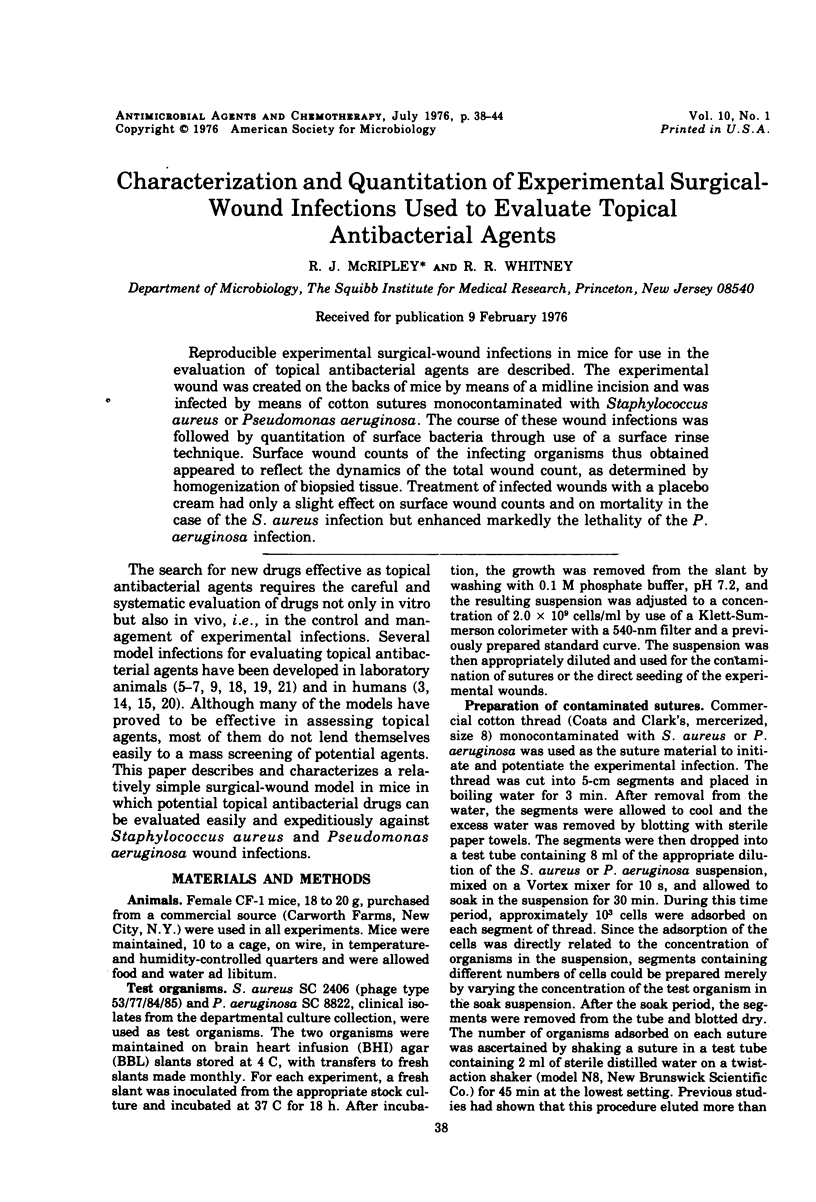
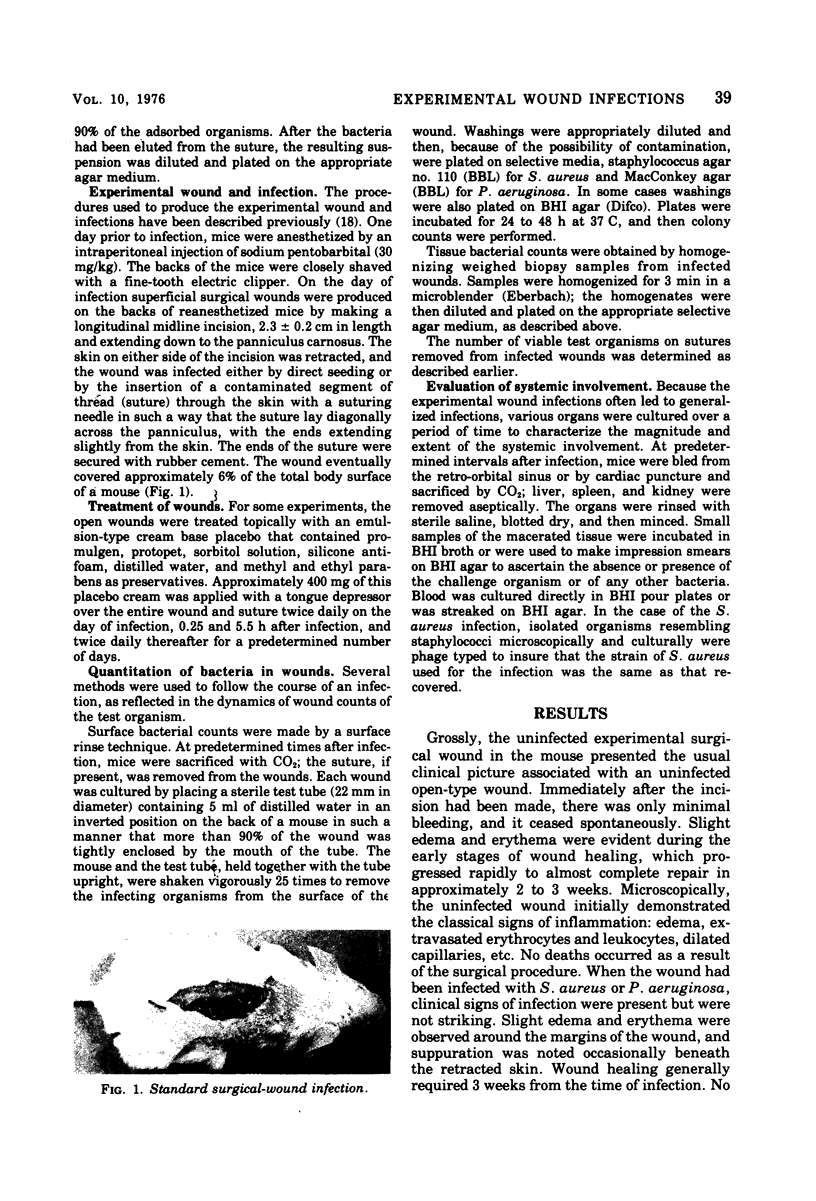
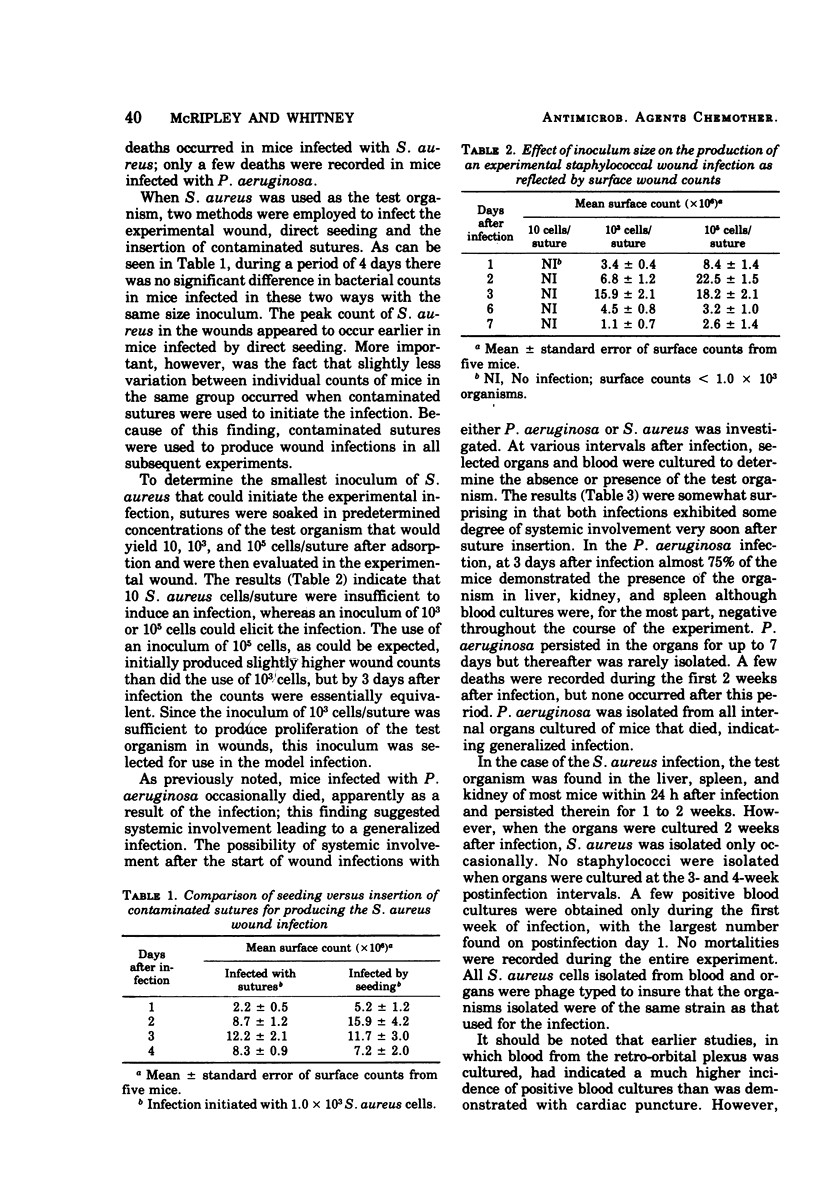
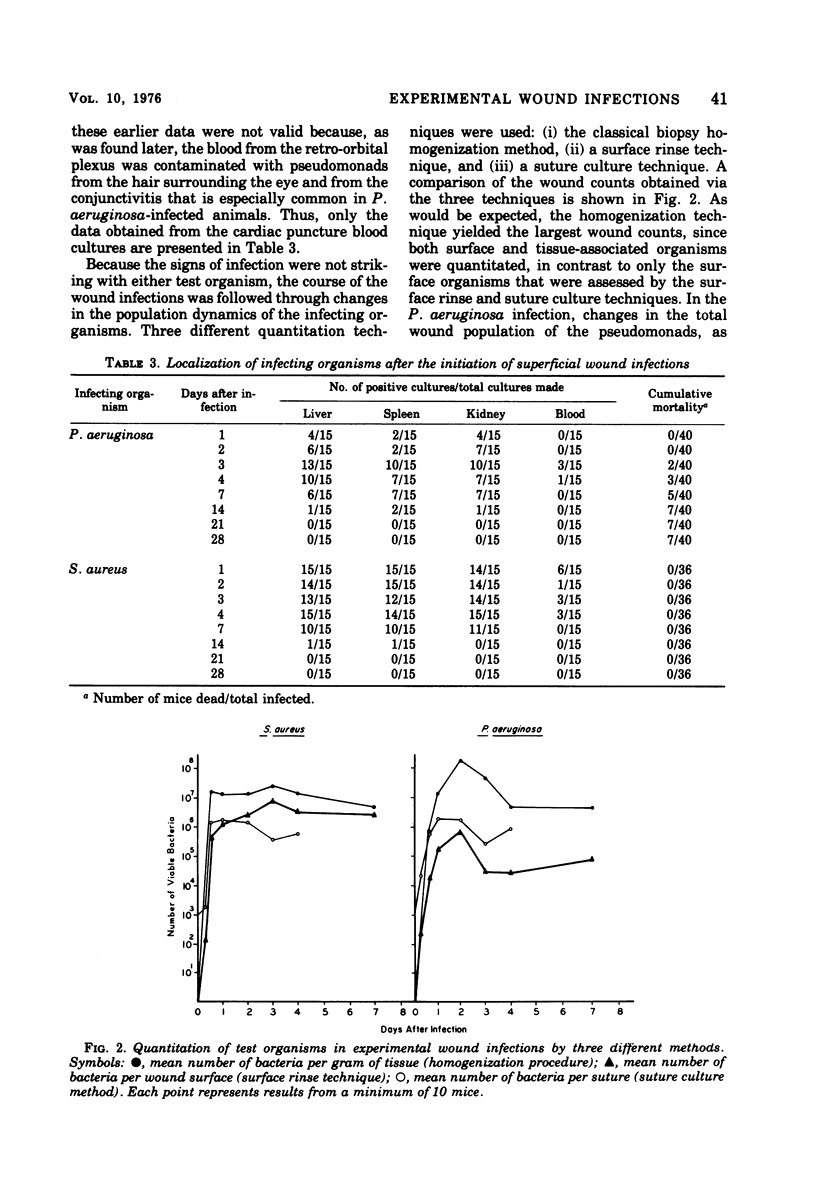
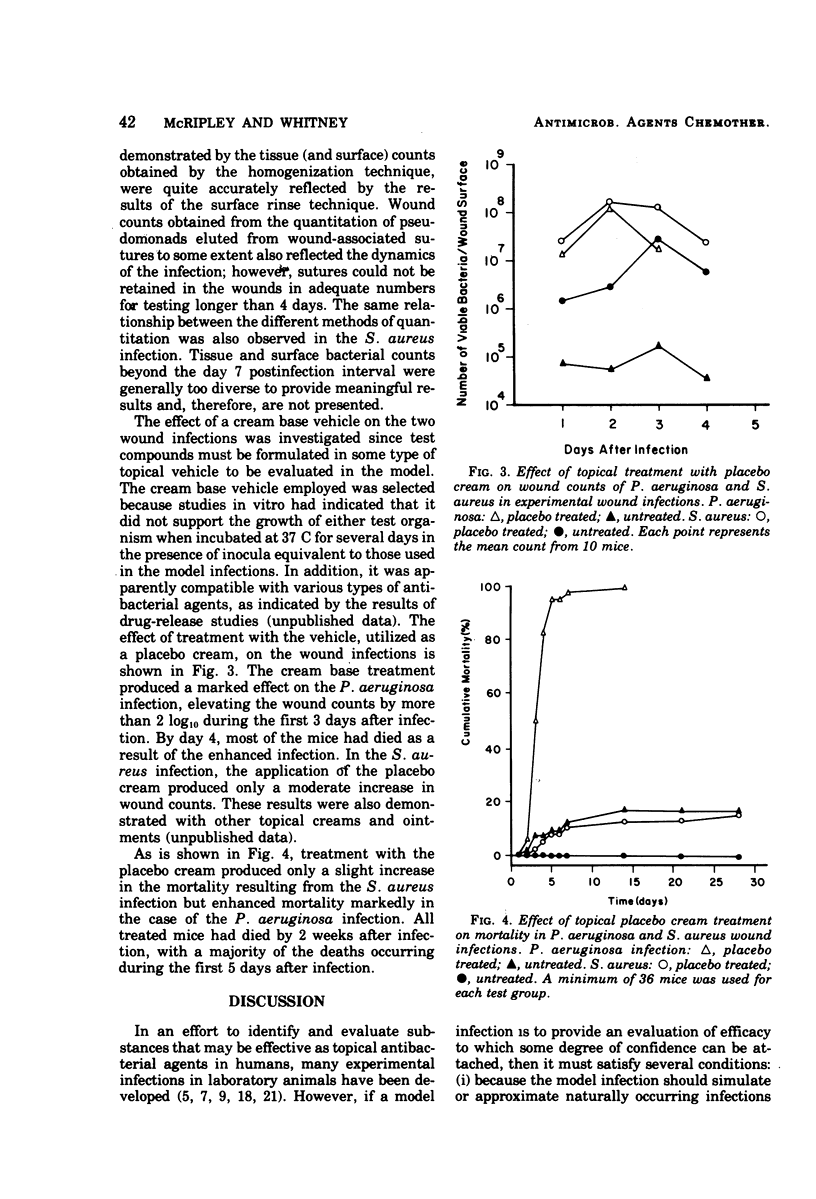
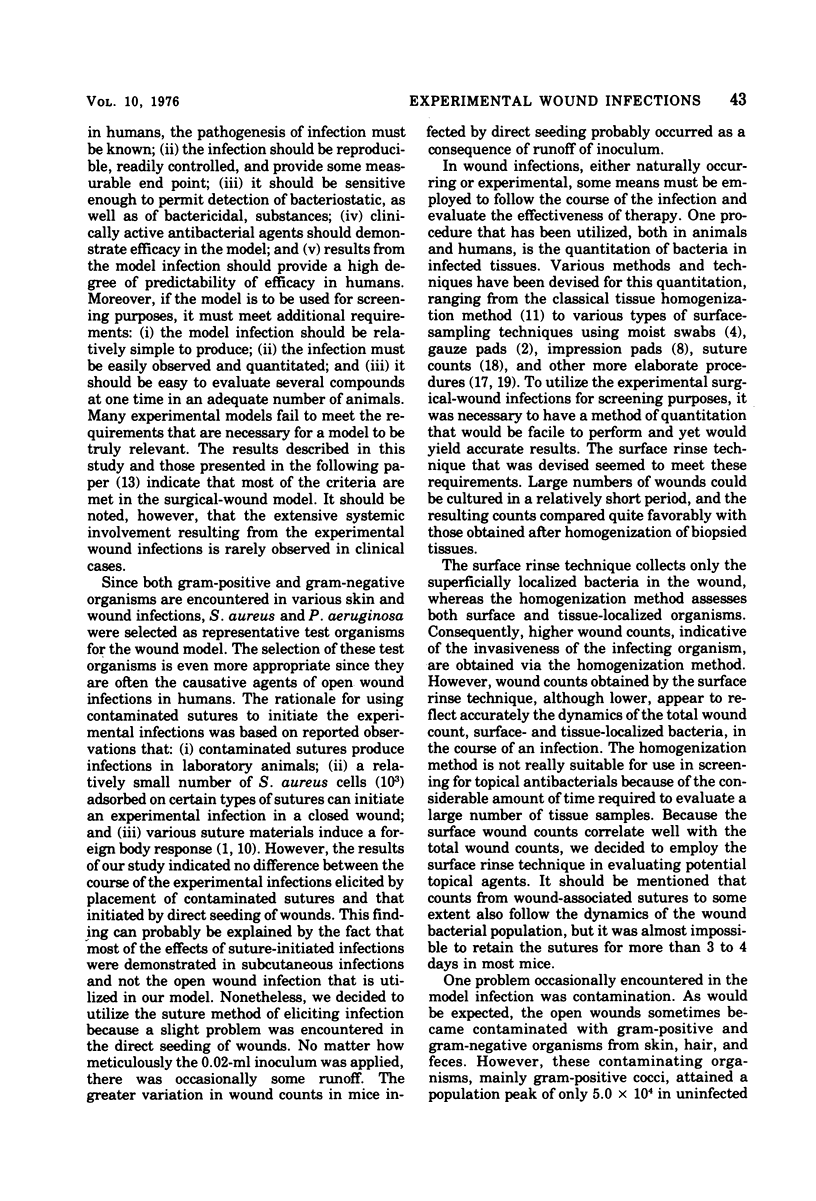
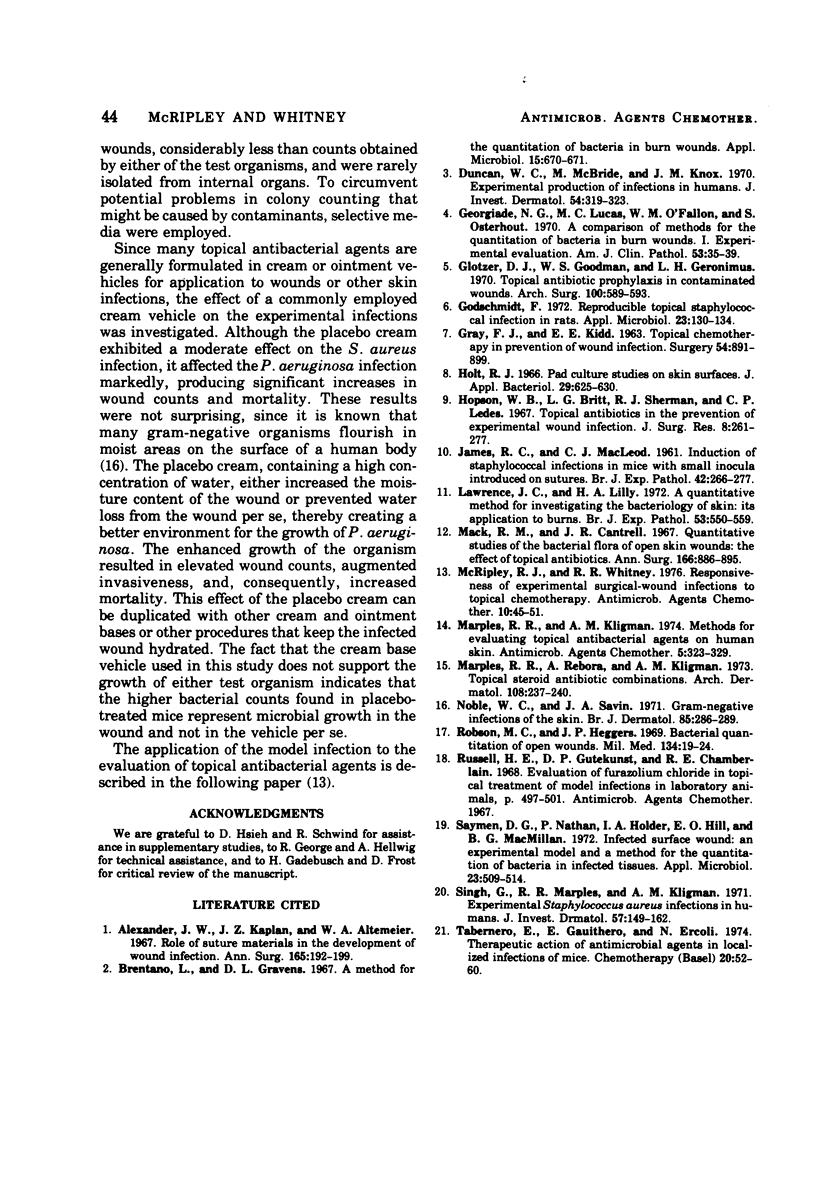
Images in this article
Selected References
These references are in PubMed. This may not be the complete list of references from this article.
- Alexander J. W., Kaplan J. Z., Altemeier W. A. Role of suture materials in the development of wound infection. Ann Surg. 1967 Feb;165(2):192–199. doi: 10.1097/00000658-196702000-00005. [DOI] [PMC free article] [PubMed] [Google Scholar]
- Brentano L., Gravens D. L. A method for the quantitation of bacteria in burn wounds. Appl Microbiol. 1967 May;15(3):670–671. doi: 10.1128/am.15.3.670-671.1967. [DOI] [PMC free article] [PubMed] [Google Scholar]
- Duncan W. C., McBride M. E., Knox J. M. Experimental production of infections in humans. J Invest Dermatol. 1970 Apr;54(4):319–323. doi: 10.1111/1523-1747.ep12258627. [DOI] [PubMed] [Google Scholar]
- GRAY F. J., KIDD E. E. TOPICAL CHEMOTHERAPY IN PREVENTION OF WOUND INFECTION. Surgery. 1963 Dec;54:891–899. [PubMed] [Google Scholar]
- Georgiade N. G., Lucas M. C., O'Fallon W. M., Osterhout S. A comparison of methods for the quantitation of bacteria in burn wounds. I. Experimental evaluation. Am J Clin Pathol. 1970 Jan;53(1):35–39. doi: 10.1093/ajcp/53.1.35. [DOI] [PubMed] [Google Scholar]
- Glotzer D. J., Goodman W. S., Geronimus L. H. Topical antibiotic prophylaxis in contaminated wounds. Experimental evaluation. Arch Surg. 1970 May;100(5):589–593. doi: 10.1001/archsurg.1970.01340230055012. [DOI] [PubMed] [Google Scholar]
- Goldschmidt F. Reproducible topical staphylococcal infection in rats. Appl Microbiol. 1972 Jan;23(1):130–134. doi: 10.1128/am.23.1.130-134.1972. [DOI] [PMC free article] [PubMed] [Google Scholar]
- Holt R. J. Pad culture studies on skin surfaces. J Appl Bacteriol. 1966 Dec;29(3):625–630. doi: 10.1111/j.1365-2672.1966.tb03516.x. [DOI] [PubMed] [Google Scholar]
- Hopson W. B., Jr, Britt L., Sherman R. T., Ledes C. P. The use of topical antibiotics in the prevention of experimental wound infection. J Surg Res. 1968 Jun;8(6):261–266. doi: 10.1016/0022-4804(68)90096-6. [DOI] [PubMed] [Google Scholar]
- JAMES R. C., MACLEOD C. J. Induction of staphylococcal infections in mice with small inocula introduced on sutures. Br J Exp Pathol. 1961 Jun;42:266–277. [PMC free article] [PubMed] [Google Scholar]
- Lawrence J. C., Lilly H. A. A quantitative method for investigating the bacteriology of skin: its application to burns. Br J Exp Pathol. 1972 Oct;53(5):550–559. [PMC free article] [PubMed] [Google Scholar]
- Mack R. M., Cantrell J. R. Quantitative studies of the bacterial flora of open skin wounds: the effect of topical antibiotics. Ann Surg. 1967 Dec;166(6):886–895. doi: 10.1097/00000658-196712000-00002. [DOI] [PMC free article] [PubMed] [Google Scholar]
- Marples R. R., Kligman A. M. Methods for evaluating topical antibacterial agents on human skin. Antimicrob Agents Chemother. 1974 Mar;5(3):323–329. doi: 10.1128/aac.5.3.323. [DOI] [PMC free article] [PubMed] [Google Scholar]
- Marples R. R., Rebora A., Kligman A. M. Topical steroid-antibiotic combinations: assay of use in experimentally induced human infections. Arch Dermatol. 1973 Aug;108(2):237–240. doi: 10.1001/archderm.108.2.237. [DOI] [PubMed] [Google Scholar]
- McRipley R. J., Whitney R. R. Responsiveness of experimental surgical-wound infections to topical chemotherapy. Antimicrob Agents Chemother. 1976 Jul;10(1):45–51. doi: 10.1128/aac.10.1.45. [DOI] [PMC free article] [PubMed] [Google Scholar]
- Noble W. C., Savin J. A. "Gram-negative" infections of the skin. Br J Dermatol. 1971 Sep;85(3):286–289. doi: 10.1111/j.1365-2133.1971.tb07233.x. [DOI] [PubMed] [Google Scholar]
- Robson M. C., Heggers J. P. Bacterial quantification of open wounds. Mil Med. 1969 Jan;134(1):19–24. [PubMed] [Google Scholar]
- Saymen D. G., Nathan P., Holder I. A., Hill E. O., Macmillan B. G. Infected surface wound: an experimental model and a method for the quantitation of bacteria in infected tissues. Appl Microbiol. 1972 Mar;23(3):509–514. doi: 10.1128/am.23.3.509-514.1972. [DOI] [PMC free article] [PubMed] [Google Scholar]
- Singh G., Marples R. R., Kligman A. M. Experimental Staphylococcus aureus infections in humans. J Invest Dermatol. 1971 Sep;57(3):149–162. doi: 10.1111/1523-1747.ep12261498. [DOI] [PubMed] [Google Scholar]
- Tabernero E., Guaithero E., Ercoli N. Therapeutic action of antimicrobial agents in localized infections of mice. Chemotherapy. 1974;20(1):52–60. doi: 10.1159/000221791. [DOI] [PubMed] [Google Scholar]



